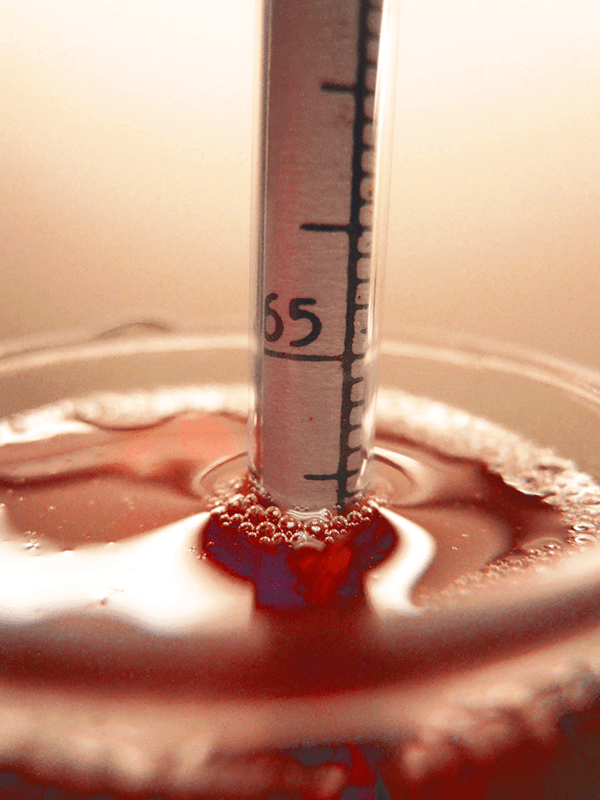 One of the most important pieces of winemaking equipment is the wine hydrometer. Without this, you’re making wine blindly, and risk making a wine that’s not very palatable. If you don’t have one already, I recommend purchasing a wine hydrometer right now. It will be a piece of winemaking equipment that will pay for itself over and over again. Here’s some information on wine making using a hydrometer.
One of the most important pieces of winemaking equipment is the wine hydrometer. Without this, you’re making wine blindly, and risk making a wine that’s not very palatable. If you don’t have one already, I recommend purchasing a wine hydrometer right now. It will be a piece of winemaking equipment that will pay for itself over and over again. Here’s some information on wine making using a hydrometer.
What is a wine hydrometer?
The quick and dirty description of what a wine hydrometer looks like is that it’s similar in structure to a thermometer. It’s often made of glass, and has a bulb-like bottom and a long stem. There are gradations marked on the side of the glass stem which when in use indicates to the user how much sugar is in a sample of wine.
How does a wine hydrometer work?
In scientific speak, a wine hydrometer measures the specific gravity of a fluid by displacing the liquid in which it is floating in proportion to the relative mass or “weight” of the solution. Yet another scientific way to define specific gravity is the ratio of the density of a solution compared with the density of a reference solution. In the case of liquid measurements, water is used as the reference solution to compare against wine.
How does this relate to sugar concentration? Well, water has no sugar in it, and has a specific gravity of 1.000. As sugar is added to water, the specific gravity increases. Thus, the amount that the specific gravity increases by is proportional to the concentration of sugar therein. The more sugar in the wine, the greater the specific gravity. As wine yeast consume sugar during fermentation, the specific gravity of your wine will drop. How much sugar is in your must or wine is proportional to the specific gravity of the solution. The amount of sugar will also help you determine what the alcohol level of your finished wine will be.
Why should I care about specific gravity?
Knowing the specific gravity that you determine with a wine hydrometer is important to the success of your fermentations and winemaking in general. Without a wine hydrometer, it’s much more difficult to determine the sugar level in your wine must or your wine, thus making it even more difficult to know how your fermentation is progressing and if there are any unexpected adjustments you need to make. Wine making using a hydrometer; monitoring the specific gravity of your must, you’ll be ready when an unexpected change occurs requiring your attention and adjustments, and you’ll be able to determine how much potential alcohol the wine you are creating will be and you can adjust accordingly if need be.
know how your fermentation is progressing and if there are any unexpected adjustments you need to make. Wine making using a hydrometer; monitoring the specific gravity of your must, you’ll be ready when an unexpected change occurs requiring your attention and adjustments, and you’ll be able to determine how much potential alcohol the wine you are creating will be and you can adjust accordingly if need be.
—–
Ed Kraus is a 3rd generation home brewer/winemaker and has been an owner of E. C. Kraus since 1999. He has been helping individuals make better wine and beer for over 25 years.

I have some cherry that has fermented and stopped at 1.006 and won’t go any farther. Any ideas or is this all its going to do. Started at 1.085.
Thanks for any ideas you can give me.
Ron, the fermentation is not complete until the specific gravity reading reaches .998 or less. To correct a stuck fermentation, you need to determine what caused it to become stuck. The article posted below will cover the most common cause of fermentation failure. See if any of the reasons apply to your situation.
Top Reasons For Fermentation Failure
http://www.eckraus.com/wine-making-failure
Can brown sugar be used instead of white when adjusting the Brix to approx 21?
Sherman, yes you can use brown sugar when making wine.